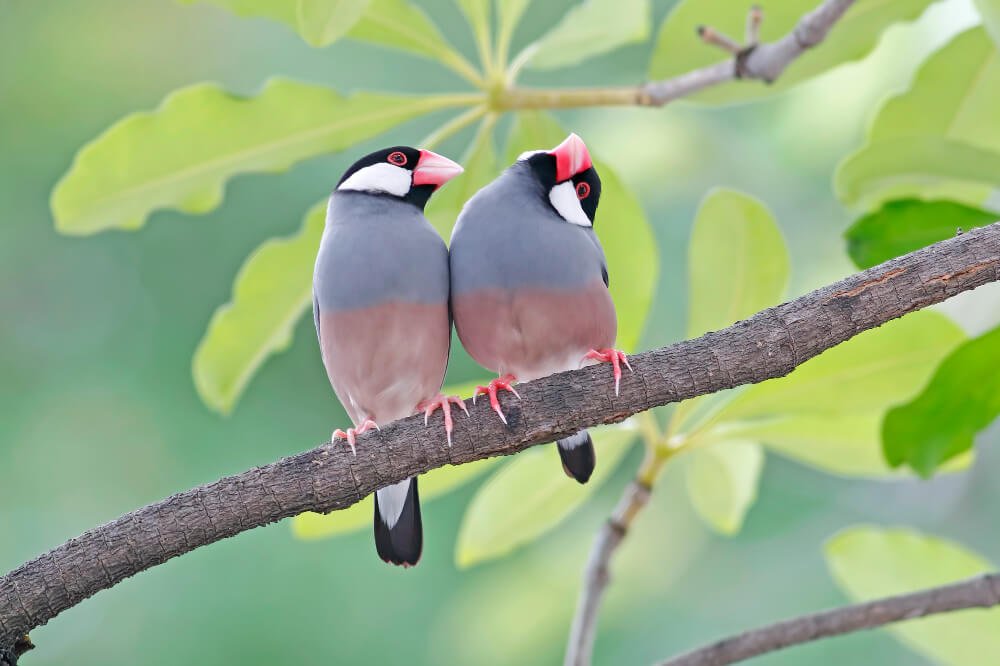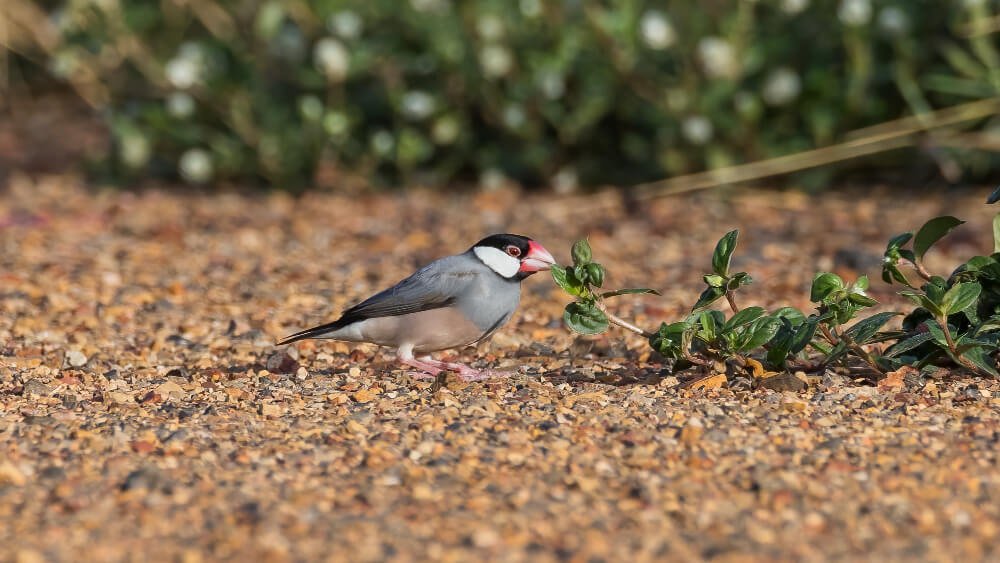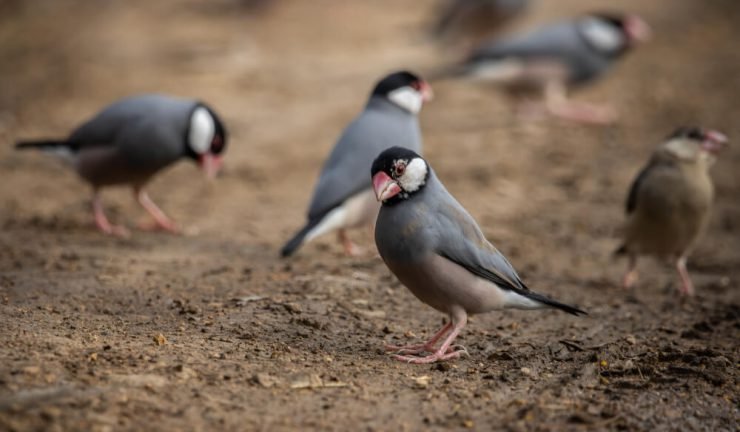To adopt this bird, you must be aware of its coloring. These variances further highlight how delicate and unique the hue is. The Java sparrow is a little bird indigenous to Bali Islands in Indonesia. The introduction of the bird to other nations by sailors and other travelers is a significant part of the bird’s history.
Java sparrows used to be eradicated by destroying rice fields. Read this article to the conclusion to learn more about the Java sparrow’s colors and the care given to the creation, and then prepare to be astounded by this bird’s beauty!
What are the color variations of the Java sparrow?

The java sparrow comes in a variety of hues. However, the original coloration was intended to have the body in two tones of grey, the head and tail in black, and the cheeks in white. The chest can be transformed from shades of grey to cinnamon or brown.
The beak is a ruddy orange color. Usually, a lighter shade goes on the back of the eyes. It is possible to find additional Java sparrow colors with time and some mutations. However, the value increases with differentiation.
The cheeks of this bird always stand out, regardless of the hue, which is an intriguing characteristic. Size is consistent, ranging from 12 to 15 cm. It has a 13 g weight and a 10-year life span in captivity. Look at the available Java sparrow colors:
White Java sparrow

The entire body of the white Java sparrow is this hue, but the beak and the area around the eyes are reddish-orange. Even in this shade, the cheeks are still remarkable, and the coat is smooth and distinct.
White and grey Java sparrow

The Java sparrow has a grey and white body but a darker grey head in this mutation. Despite being grey, the bird’s cheeks are white, and its tail can either match or contrast with its head or body color.
Brown Java sparrow

Java sparrow is also available in a brown hue, with the body and belly being up to two shades lighter. The cheeks are always white. Regardless of how dark or light, the head is brown.
Blue Java sparrow

This Java sparrow is just as gorgeous as the other varieties and has blue and grey tones all over it. The beak is reddish, the cheeks are white, and the tail and head are black.
See how the food and care required for this bird’s well-being are now that you are aware of the colors of the Java sparrow. It’s important to remember that an authority’s guidance can strengthen these suggestions.
Can the Java sparrow be left alone in the cage?

Keeping a single Java sparrow in the cage is not suggested because this bird prefers to be in flocks and can become depressed if left alone. Have at least one pair of his kind in the cage because he gets along well with them.
You can use more Java sparrows, including those in the colors above, depending on the size of the cage. Up to five pairs of this species can be kept in an enclosure that is 1.5 meters long and one meter high.
The provision of feeders and drinkers appropriate for the number of birds is also crucial for this. Additionally, keeping the nursery clean is essential for health. The placement of perches for exercise is also vital.
On warmer days, ensure to include a birdbath in the aviary because Java sparrows also enjoy baths. Always watch for behavioral changes, such as decreased activity or a white beak. A veterinarian ought to be consulted in such circumstances.
The Java sparrow bird must also be shielded from wind and precipitation. Maintain the pond in a bright area while avoiding excessive sunlight, especially between 7 am–8 am and 4 pm–6 pm.
What does the Java sparrow eat?
Although the Java sparrow is commonly known for eating rice in the wild, it requires a balanced diet in captivity that is based on seeds and feed. Eventually, you’ll be able to give them various fruits like bananas, apples, and pears without the seeds.
Fruit seeds contain a chemical called cyanide, which is poisonous to birds. So, before presenting the fruit, take off the roots.





Add comment